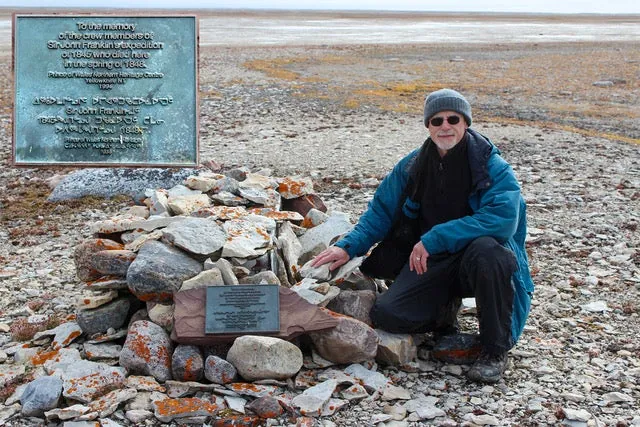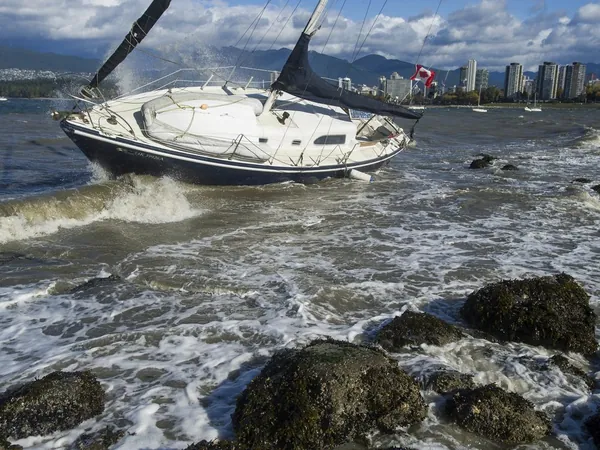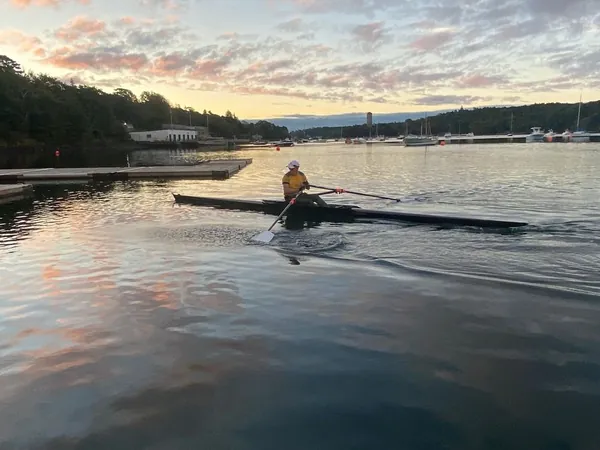
Astonishing Discovery: Another Franklin Expedition Officer Unveiled After 179 Years!
2024-09-24
Background on the Franklin Expedition
In a groundbreaking development, researchers from the University of Waterloo and Lakehead University have successfully identified the skeletal remains of James Fitzjames, a senior officer from Sir John Franklin's ill-fated 1845 Northwest Passage expedition. This remarkable identification was achieved through advanced DNA and genealogical analyses, providing a fresh perspective on one of the most tragic tales in Arctic exploration history.
James Fitzjames's Role in the Expedition
Fitzjames, an officer aboard HMS Erebus, played a pivotal role in the harrowing escape attempt in April 1848, leading 105 survivors from their ice-trapped ships. Unfortunately, none of the crew would ultimately survive the unforgiving Arctic conditions. Since the expedition's disastrous end, numerous remains belonging to its crew have been discovered scattered across King William Island in Nunavut.
Breakthrough Identification
The breakthrough in identifying Fitzjames's remains came from DNA samples linked to a living descendant, establishing a genetic match with bones unearthed at the archaeological site where 451 fragments from at least 13 sailors were recovered. Stephen Fratpietro of Lakehead University’s Paleo-DNA lab explained, “We worked with a good quality sample that allowed us to generate a Y-chromosome profile, and we were lucky enough to obtain a match.”
Significance of the Discovery
Fitzjames marks only the second identification of those 105 sailors, joining John Gregory, an engineer from HMS Erebus, whose remains were confirmed back in 2021. This identification is not just about naming the deceased; it sheds light on the grim realities faced by the crew during those final days. Dr. Douglas Stenton, an anthropologist at Waterloo, noted that this discovery provides vital insights into the expedition’s tragic conclusion.
Eyewitness Accounts and Historical Context
Eyewitness accounts from the Inuit in the 1850s hinted at dire measures taken by the crew, including cannibalism—claims that shocked the European world of the time. These accounts gained substantial support through archaeological findings in 1997, when Dr. Anne Keenleyside discovered cut marks on nearly 25% of human bones at a site known as NgLj-2, indicating that at least four crew members had fallen victim to this horrific reality. Fitzjames's mandible, also marked by multiple cut marks, corroborates that even in death, he was not spared from such desperation, demonstrating that rank could not shield one from the horrors faced by the expedition.
Reflections on Cannibalism
Dr. Robert Park, another member of the research team, reflected on the findings, emphasizing society's changing views on cannibalism. He articulated, “Despite the abhorrent nature of cannibalism as perceived in the 19th century, today we comprehend the concept of survival cannibalism more fully and can empathize with those who resorted to it.” He also pointed out that the ongoing interest in the Franklin expedition—sparked by various speculative books and a recent television miniseries—highlights the enduring fascination with this story, suggesting that the reality is just as gripping as any horror narrative.
Memorial and Future Research
The final resting place of Fitzjames and his fellow sailors is now marked by a memorial cairn, adorned with a commemorative plaque honoring their memory.
In an appeal to the descendants of other Franklin expedition members, Dr. Stenton expressed gratitude to the family of Fitzjames for their help in this research and extended an invitation for further collaborations to identify additional crew members.
Publication and Acknowledgements
This astonishing revelation—titled “Identification of a Senior Officer from Sir John Franklin's Northwest Passage Expedition” and published in the Journal of Archaeological Science: Reports—was made possible through support from the Government of Nunavut and the University of Waterloo. As researchers continue to unearth the past, one can only wonder what further secrets the Arctic still holds about this legendary expedition.









 Brasil (PT)
Brasil (PT)
 Canada (EN)
Canada (EN)
 Chile (ES)
Chile (ES)
 España (ES)
España (ES)
 France (FR)
France (FR)
 Hong Kong (EN)
Hong Kong (EN)
 Italia (IT)
Italia (IT)
 日本 (JA)
日本 (JA)
 Magyarország (HU)
Magyarország (HU)
 Norge (NO)
Norge (NO)
 Polska (PL)
Polska (PL)
 Schweiz (DE)
Schweiz (DE)
 Singapore (EN)
Singapore (EN)
 Sverige (SV)
Sverige (SV)
 Suomi (FI)
Suomi (FI)
 Türkiye (TR)
Türkiye (TR)